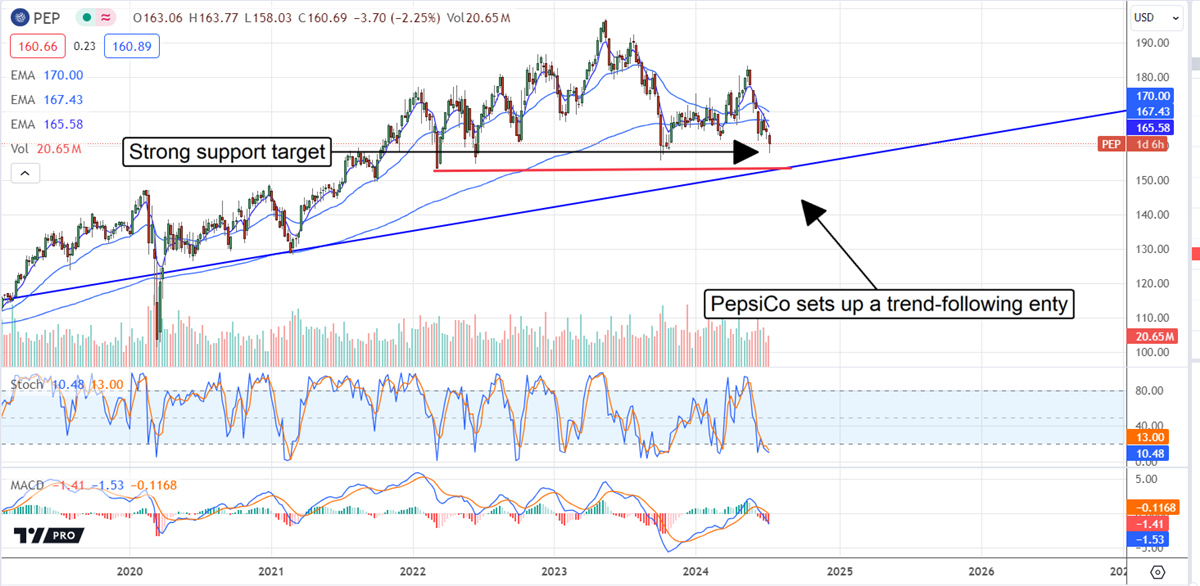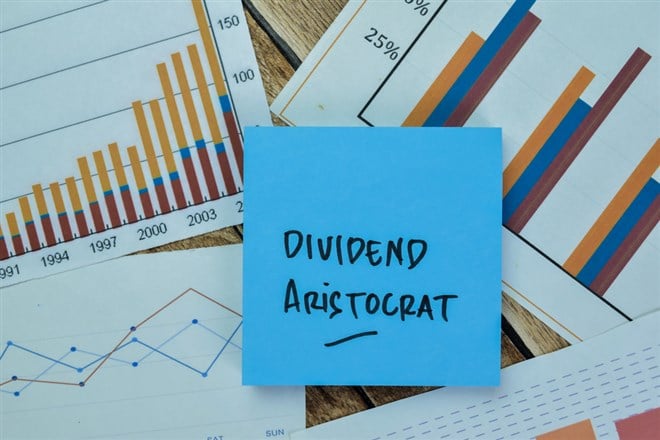Ticker Reports for July 11th
Sales Breakout Sends This Semiconductor Stock to Record High
Investors will find that most of the market’s attention has centered on today's technology sector, particularly stocks dealing with artificial intelligence and its growing adoption throughout the global economy. For better reference, investors can dig into the VanEck Semiconductor ETF (NASDAQ: SMH) to filter out their picks further. Eventually, the list will come down to a handful of stocks.
Within that handful, shares of NVIDIA Co. (NASDAQ: NVDA) will have a special place, checking off the momentum and financial growth items. NVIDIA is not operating in a vacuum, though, as other players are starting to make a splash in the chips and semiconductors arena. Most recently, stocks like Intel Co. (NASDAQ: INTC) and Micron Technology Inc. (NASDAQ: MU) have also seen bullish price action. But there is one ace up the industry’s sleeve.
Shares of Taiwan Semiconductor Manufacturing (NYSE: TSM) are at a new all-time high. The driver behind this rally is simply the company’s financials, which just showed a double-digit revenue increase. This recent announcement serves more as a preview than a retrospective, indicating that the company is poised for significant growth in the coming quarter.
Investing in Taiwan Semiconductor: A Supercycle on the Horizon
With rising geopolitical concerns between the United States and China, particularly around Semiconductor and chip technology, some investors were concerned about whether Taiwan Semiconductor would be safe from tariff and embargo repercussions. The answer isn’t unclear; the U.S. is doing the right thing today with a Chinese invasion of Taiwan looming.
The government has granted Taiwan Semiconductor up to $6.6 billion in its latest round of funding. The capital will be deployed to make semiconductor factories onshore in states like Arizona and Ohio. Bringing the semiconductor supply chain to domestic borders will help American tech companies better control pricing and inventories.
Investors should pay attention to this. The government had many chip providers to choose from, so why Taiwan Semiconductor? The company supplies chips to most of today’s technology and consumer electronics behemoths.
That’s right. Names like Apple Inc. (NASDAQ: AAPL) rely on Taiwan to get their chips, and so does NVIDIA. With Apple on the brink of announcing its new iPhone 16, which is said to have increased artificial intelligence capabilities, especially after Apple partnered with OpenAI, Taiwan Semiconductor’s chips became more of a commodity.
Not only that, but NVIDIA has now gone through what’s known as the chip spending cycle, where the company had to deploy more capital into marketing and sales efforts. This cycle is followed by the development cycle. After sales are made, it is time to return to the drawing board and spend on research and development (R&D) to develop a new product.
Taiwan Semiconductor is behind all of these new supercycles, and the markets have taken notice of this massive exposure.
Why Optimism Is Blooming for Taiwan Semiconductor Stock
Recently, Taiwan Semiconductor Manufacturing reported a 40% revenue increase over the year. Investors can refer to NVIDIA for reference in the semiconductor cycle today and recall that it is on the spending (not the development) end of the spectrum.
So, with Taiwan Semiconductor reporting momentum in its revenue, the next inning of the spending cycle will fall on that stock after NVIDIA. For starters, the spending cycle involves a jump in revenue, followed by a trickle-down effect in bigger earnings per share (EPS).
With this potential future trend in mind, investors can now look to Wall Street to determine whether Taiwan Semiconductor stock is treading on the side of reality. Analysts at Susquehanna felt comfortable enough to boost the stock’s price target to $250 a share, or 33% higher than where it trades today.
In other news, Wall Street is now forecasting up to 25.6% EPS growth for the next 12 months, which appears to be on the conservative side. NVIDIA analysts also want to see EPS growth of 25.3%, yet valuations couldn’t be further apart.
NVIDIA trades at a P/E ratio of 50.0x, while Taiwan Semiconductor stock trades at a much lower 30.8x. If EPS drives valuations, and both stocks are looking to grow by the same amount, then how come their valuations are that much different?
The answer is geopolitical risks, or at least the perception that there are some. As investors now know, the United States is mobilizing the treasury to mitigate these risks, and knowing that Taiwan Semiconductor is a key player in domestic electronic consumption and leadership in artificial intelligence, it is likely that the government won’t let this company be harmed.
That’s why investors shouldn’t be worried, just like institutions weren’t. Over the past 12 months, up to $71.2 billion of institutional investment capital made its way into Taiwan Semiconductor stock, all to show the same vote of confidence that the government sent in for the stock.
Trump Exposes Sinister conspiracy to Fed-Controlled Digital Currency.
Donald Trump once again sounded the alarm against Fed-controlled digital currencies (CBDCs).
If these plans are implemented, it could mean the end of America as we know it.
Surprise Buying Opportunity on This Dividend Aristocrat
PepsiCo (NASDAQ: PEP) shares have struggled with traction for the last two years as inflation, pricing pressure, consumer pushback, and economic headwinds impact results, but those days will soon end. The latest CPI report shows inflation cooling faster than expected and has the FOMC on track to make at least one interest rate cut this year. The takeaway is that PepsiCo continues to build leverage for investors with operational improvement and territorial expansion that will drive accelerated results over the coming years because the cost of money will fall, impacting activity across the spectrum and driving demand for PepsiCo beverages, snacks, and breakfast items.
PepsiCo Falls on Cautious Guidance, Sets Up Trend Following Entry
PepsiCo’s Q2 results are mixed and give reason for caution but also reveal the strength of its diversified model and international expansion efforts. The $22.5 billion net revenue is weaker than expected but up 0.8% compared to last year and only 44 bps below the consensus reported by MarketBeat.
The revenue weakness is centered in North America and Quaker Oats, which experienced recalls during the period. It fell 18% segmentally, while results in all other segments were milder. Frito Lay NA and APAC/NZ contracted by slim 0.5% and 2% margins while the core PepsiCo NA, Latin America, Europe, and other emerging markets grew. Growth was most robust in Latin America, where economic expansion and the growing middle class drive demand. It rose by 7% and can be expected to lead over the next few quarters. Emerging markets in Africa and South Asia will also likely perform well over the coming years.
The margin is good despite the headwinds. The company’s efforts to control costs and improve efficiency are paying off, allowing the company to lean less heavily on pricing increases than others in the category. The net result is improved gross and operating margins on a GAAP and adjusted basis, with the adjusted operating margin up 150 basis points. The bottom line is that GAAP earnings grew by 13% and adjusted by 10% to outpace the top-line advance by more than 1000 basis points, and the leverage is expected to stick.
The guidance caused the stock price to fall, but it is better than it appears at first glance. Due to the Q2 trends, the company tempered its outlook for revenue growth marginally from at least 4% to a solid 4% while maintaining the EPS outlook. EPS is expected to grow at a high single-digit pace and sustain robust cash flow.
PepsiCo Builds Value for Investors With Cash Flow and Capital Returns
PepsiCo had a cash-flow-negative quarter, but the timing of payments, debt reduction, and improved shareholder equity offset that detail. Equity is up 5% after the capital returns, including the dividend and share repurchases. PepsiCo isn’t an aggressive repurchaser but reduced its count by 0.36% average for the quarter, providing an updraft for the stock price.
Regarding the balance sheet, the debt levels are low at less than 2x equity and 6x cash, so capital returns are safe. Investors can expect this Dividend Aristocrat to continue paying its S&P 500-leading $5.42 annualized payout indefinitely and for distribution increases to continue for the foreseeable future.
PepsiCo Falls Into Deep-Value Territory: Trend-Following Signal to Follow
PepsiCo’s share price fell more than 2% on the Q2 release, but the takeaway from the price action is bullish. The market is buying the dip and setting up a trend-following signal in this consumer staple that could lead to a multi-year rally. The stock could climb $10 to the $170 level soon because that is the low end of the analysts' range, and higher prices are likely. Assuming the analysts maintain their buy rating and do not lower the range, this stock could rebound to $190 to $200 within the next quarter or two.

Nvidia's Quiet $1 Trillion Pivot
Nvidia recently added $277 billion in market cap …
IN ONE DAY.
New Theme Park Powerhouse: Merger Creates Industry-Leading Stock
Six Flags Entertainment (NYSE: SIX) announced last week the successful completion of its merger with Cedar Fair (NYSE: FUN). The merger of these two firms in the consumer discretionary sector creates one of the largest theme park operators in North America. It will compete with firms such as the Walt Disney Company (NYSE: DIS) and Universal Studios. Going forward, the combined entity will operate under the name Six Flags Entertainment. Shares will trade on the New York Stock Exchange under the ticker symbol FUN.
Let's examine what the combined company will look like and the advantages the company expects the merger to bring. Details on Six Flags' new leadership will be provided, followed by a review of the market's reaction and analysts' expectations so far.
Expected Benefits: A Bigger and Better Six Flags
Together, the two firms now operate 42 parks, and they have an annual attendance of 48 million people, based on 2023 numbers. A company presentation on the merger lists the last 12 months' revenue for the period ending in Q3 2024 as $3.4 billion. This accounts for synergies of $200 million that the firm expects to fully realize in the next three years. Listed as $826 million, free cash flow used the same assumptions.
In addition to these synergies, the combination also increases the geographic diversification of parks. Cedar Fair heavily concentrated its parks in the Midwest, while Six Flags concentrated its parks in the South. Now, parks are more evenly distributed across North America. This will help reduce fluctuations in revenue based on weather-related seasonal volatility.
The company also believes the merger will allow the firms to significantly decrease leverage. Within two years, the entity's net leverage, also known as its debt-to-EBITDA ratio, will decrease to 3.0x. As standalone firms, the figure came in at 4.8x and 4.1x for Six Flags and Cedar Fair, respectively.
The company also believes it will be able to drive long-term value in various ways through the merger. This includes cross-pollinating parks with sought-after intellectual property licenses each firm acquired separately, such as Looney Tunes, DC Comics, and PEANUTS. Combining customer bases gives the firm access to more data it can analyze to create better guest experiences. The firm will also be able to expand offerings to its season pass holders, creating increased loyalty.
Cedar Fair’s Management Taking Over is a Big Positive
Citigroup’s travel and leisure analyst James Hardiman had good things to say about the combination. He stated, "It's really the only deal of its kind this century, and I think it creates significant value."
He likes that Cedar Fair's legacy executives will take over the combined firm's management. Robert Zimmerman, Cedar Fair's CEO, will assume the same role. The same is true for the chief operating officer and chief financial officer of Cedar Fair.
Former CEO of Six Flags, Selim Bassoul, faced extensive criticism as the leader of the firm. In 2022, he attempted an aggressive strategy to increase revenues by raising prices. He hoped this would lower the attendance of lower-spending customers. In turn, decreased congestion would attract more families who spend more on concessions and other items.
His plan backfired tremendously, dropping attendance by 33% from 2021 to 2022, causing revenues to drop 21%. Over the same period, Cedar Fair’s performance was stellar. The company increased attendance by 38% and revenues by 36%. This stark contrast puts even more of a blemish on Bassoul’s errant decision. Shares of Six Flags were down 27% since Bassoul took over in November 2021.
Zimmerman has been Cedar Fair's CEO since 2017, signaling stability and indicating that shareholders were generally happy with this leadership. Since November 2021, Cedar Fair’s share price has been up 8%.
Going forward, Six Flags will need competent leadership to compete with large competitors like Disney. In 2023, Six Flags' net revenues grew 5% while Cedar Fair’s were down 1%. Disney’s “Experiences” segment increased net revenues by 16% in the same period.
Analyst Price Targets and Market Reaction
Since the merger, updated price targets for Six Flags have averaged $62.25, implying an upside of 20%. Since the two firms began trading as a combined entity, shares have been flat, not yet moving in line with analyst forecasts.





0 Response to "🌟 Sales Breakout Sends This Semiconductor Stock to Record High"
Post a Comment